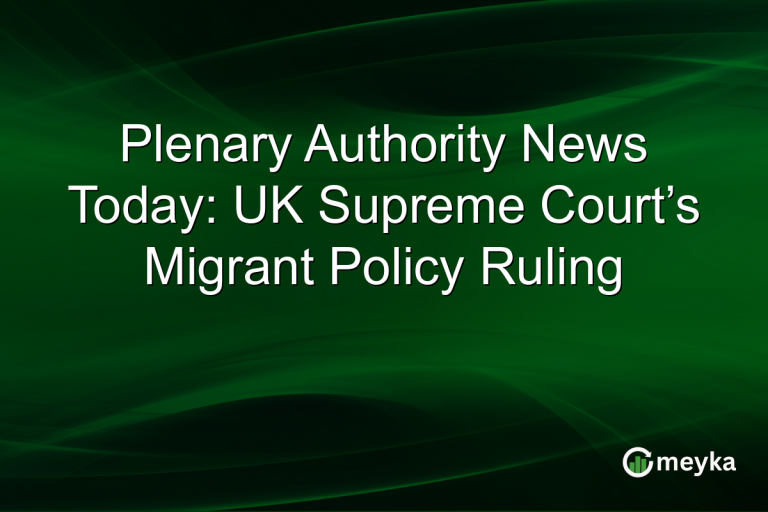Thames Water News Today: Debt Crisis and Nationalisation Fears Shake UK
Today, Thames Water faces critical scrutiny amid a mounting debt crisis, sparking intense debate over its future. As the company grapples with potential £14 billion liabilities, speculation about nationalisation intensifies. The crisis not only highlights vulnerabilities within the UK water sector but also raises questions about government intervention strategies.
The Current State of Thames Water’s Debt Crisis
Thames Water is under the spotlight with an escalating debt crisis that threatens its financial stability. Reports indicate that the utility is saddled with approximately £14 billion in debt, a figure that continues to unsettle stakeholders. This financial burden has led to concerns over the company’s ability to manage its obligations without external assistance.
Speculation has been rife that Thames Water may require a government-led financial rescue to avoid collapse. Such fears underscore potential risks to both taxpayers and the water utility’s customer base. Public confidence is waning as talks of possible government intervention intensify. This scenario is reminiscent of other recent utility challenges in the UK.
Here’s how the story is unfolding on social media: Reuters reported today on ongoing bailout discussions.
Nationalisation: A Viable Solution?
The UK water utility nationalisation debate has gained traction, driven by the precarious position of companies like Thames Water. Nationalisation, while politically sensitive, is being considered as a potential remedy for stabilizing the sector. Advocates argue it could bring improved regulatory oversight and operational efficiencies.
The call for nationalisation stems partly from concerns about service quality and environmental compliance under private management. However, critics caution against the financial implications of such a move. Any significant shift towards nationalisation would require careful negotiation and legislation, indicating a complex path ahead for policymakers.
Financial Times discusses these legislative challenges in depth.
Implications for UK Government Policy and Intervention
The Thames Water financial rescue considerations come amidst broader discussions about utility management and public accountability in the UK. Government intervention could manifest in several forms, from policy reforms to direct financial assistance. Crucially, any intervention strategy will aim to safeguard consumer interests while stabilizing the embattled utility.
This situation places pressure on UK governments to balance short-term financial interventions with long-term structural reforms in the water sector. As regulatory bodies assess the company’s prospects, they must weigh potential taxpayer impacts against the necessity of ensuring reliable water services for the population.
This debate feeds into broader policy discussions and has consistently featured in recent Cabinet meetings according to BBC News.
Final Thoughts
The Thames Water debt crisis not only highlights financial vulnerabilities within one of the UK’s leading utilities but also sets off a ripple effect across the national policy landscape. As pressures mount, discussions of nationalisation and government intervention have moved from theory to pressing political discourse.
While the resolution remains uncertain, what is clear is the necessity for strategic decision-making that balances economic realities with public service needs. This unfolding situation illustrates the importance of robust financial and regulatory frameworks to prevent similar crises moving forward, calling for a comprehensive policy reassessment in the UK water sector.
FAQs
Thames Water is currently facing a severe debt crisis, with liabilities reaching roughly £14 billion. This financial strain has raised the alarm for potential government intervention to stabilize the situation before it affects services.
Nationalisation talks are fueled by concerns over financial management failures and the pursuit of improved service quality and regulatory adherence. It is seen as a potential solution to stabilize and ensure better oversight of the utility.
The UK government could intervene through financial bailouts, regulatory reforms, or even nationalisation. Each approach aims to protect both taxpayer interests and ensure the continued reliability of water services.
If government intervention involves financial aid, taxpayers might bear the cost of stabilizing Thames Water. However, such measures are deemed necessary to prevent service disruptions and ensure long-term sector viability.
Thames Water’s financial woes stem from escalating debt, inefficient financial management, and regulatory pressures. These factors combined to create a scenario requiring potentially significant intervention to manage future operations effectively.
Disclaimer:
This is for information only, not financial advice. Always do your research.






